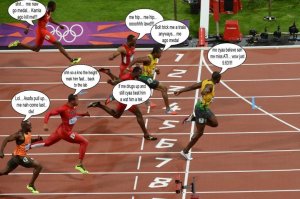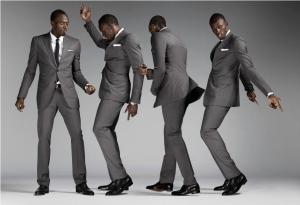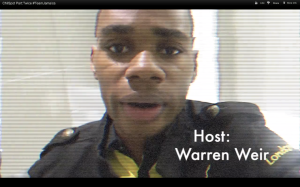The video above is from Shelly-Ann Fraser Pryce’s Facebook feed. It shows the 200m final in Beijing up close and personal and in slow mo too–
“Bolt not only reached for the moon in Beijing, but also has shown that he wasn’t a flash in the pan or an outlier. Four years later he has picked the moon out of the sky again and has done it with ease and bravado, again something Jamaicans dearly love. You must not only win, you must do it with effortless style—something Bolt has displayed over and over again. His derring-do and bravura performances are symbolic of the Jamaican ambition to appear cool and deadly at all times.”
Three years after I wrote that paragraph for Newsweek Bolt has pulled it off yet again. A thrilling double gold in the 100 and 200 metres at the Beijing 2015 World Championships (see video above for footage of the 200m). As he matures Bolt has grown into a thoroughly engaging, all conquering hero, the legendary status he once coveted now his permanently. He is the athlete of the century, this one and the last.
At Bolt’s side is the equally swift and admirable Shelly-Ann Fraser Pryce now the most decorated female runner on the planet with three 100m gold medals in the World Championships alone. And in their wake are the myriad of other Jamaican athletes plucking medals from the rest of the world, with ease and grace; young Danielle Williams winning the gold in the 100m hurdles and Hansle Parchment silver in the 110m hurdles. The women’s 200m gold went to the flying Dutchwoman, Dafne Schippers, a talent to watch, but Jamaica’s elegant, gazelle-like Elaine Thompson was hot on her heels and the much beloved Veronica Campbell-Brown hot on hers. They took the silver and bronze respectively.
Not many people realize that Jamaica has a proud tradition of sprinting going back more than half a century—to 1948 when 6 foot 4 inches tall Arthur Wint sped past Herb McKenley to win gold in the 400m. Jamaica took gold and silver in that race which can be viewed in the video immediately above. In the 1952 Olympics Jamaican runners swept the 4×400 relays from under the feet of the Americans. The video embedded below has incredible footage of Arthur Wint and Herb McKenley mining some of Jamaica’s earliest Olympic gold.
Finally here is the full text of the essay I wrote for Newsweek during the 2012 London Olympics. It captures I think some of the indomitable spirit of Jamaica and Jamaicans.
Jamaica gained independence from Britain in August 1962. As the nascent nation replaced the Union Jack with the Jamaican flag, its people imagined a future full of glory, honor, and world-thrilling exploits. With the colonizers gone and the days of slavery far behind, what could stop them from conquering the world?
As the decades rolled on, a deep and abiding disappointment began to set in as successive governments fluffed opportunities to create a workable, new framework for the aspirations and ambitions of ordinary Jamaicans. For many, things seemed to be worse than when the British were in charge; you only had to look over at the Cayman Islands for confirmation. Once part of Jamaica, the Caymanians had remained with Britain in 1962 and now seemed to be flourishing while Jamaica languished, violence and corruption paralyzing its body politic.
Most postcolonial countries have found it hard to overcome the handicaps they inherited at independence, and Jamaicans are rightly proud of their superb tradition in athletics and the country’s incomparable music, both of which have catapulted them onto the world stage on more than one occasion. For a nation this tiny, Jamaica has an ego and cultural wallop grander than most superpowers, punching way above its weight, as some here like to say.
It’s a matter of some chagrin to middle-class Jamaica that those who have put this little country on the map have been, almost without exception, members of its underclass. While formal, official Jamaica lumbers along tangled in red tape, bureaucratese, and “proper” English, the people at the bottom have sprinted and sung their way to international attention.
The exploits of Usain Bolt and his fellow Jamaican athletes have to be seen against this background. They all come from deprived communities, and each is a story of personal triumph and determination in the face of incredible odds. Usain Bolt is the personification of what Jamaicans would have liked their country to be: swift, insouciant, and unbeatable at what he does best—run. When he powered to the finish line in record time during the 100-meter, with Yohan Blake in close pursuit, they were elated. But nothing can describe the mood of brimming joy that has pervaded the nation since Bolt repeated his triumph in the 200m, once again with Blake hot on his heels. And then, as an example of what Jamaicans call “brawta”—a little extra thrown in to perfect the whole thing—Warren Weir in bronze position, completing the Jamaican trifecta.
Nothing warms the heart of Jamaicans more than to hear a story about someone triumphing against all odds, through sheer perseverance, guts, and hard work to prove his or her talent and ability. “Never say die” should have been the national motto, for as long as you try your best, even if you lose, Jamaicans will love you. But you’ll have to die trying.
Bolt not only reached for the moon in Beijing, but also has shown that he wasn’t a flash in the pan or an outlier. Four years later he has picked the moon out of the sky again and has done it with ease and bravado, again something Jamaicans dearly love. You must not only win, you must do it with effortless style—something Bolt has displayed over and over again. His derring-do and bravura performances are symbolic of the Jamaican ambition to appear cool and deadly at all times.
Jamaica is a contradictory mix of individualism and community spirit. Bolt was raised by a village, Sherwood Content, in rural Jamaica. What Jamaicans love is the fact that although you could take the boy out of the village, you couldn’t take the village out of Bolt. At heart he remains the healthy-spirited, simple-hearted boy who grew up there, though he now knows how to negotiate the deadly streets of Kingston and the world.
As video footage of Bolt and his teammates in Birmingham and at the Olympic Village shows, the Jamaican men’s team thrives on camaraderie, good will, and fun and games. Do it well and enjoy what you’re doing is another Jamaican homily, illustrated by the young men and women of this extraordinary little country. On the Olympic stage it’s been a winning strategy.
To be the best in the world is what every Jamaican would like, though circumstances often come between them and this simple ambition. Bolt is beloved because he has honed his natural gifts to perfection with enough gas left in the tank to reach higher and farther.































